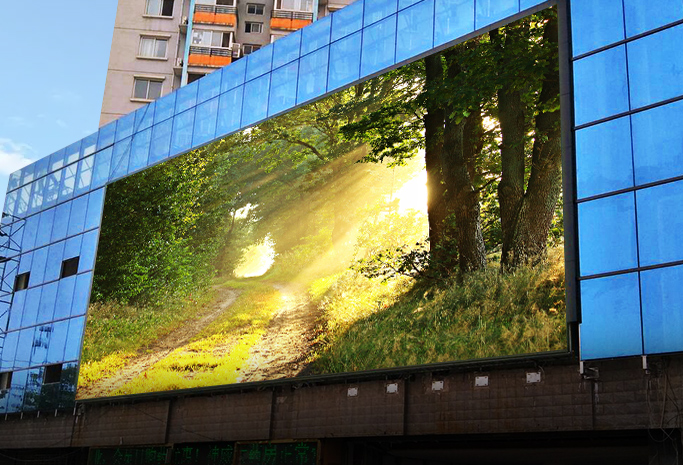The dip in the cost of semiconductor materials has made full color LED displays more accessible and prevalent across different sectors. In outdoor settings, LED panels have cemented their position as indispensable large electronic display mediums, thanks to their luminous display, energy efficiency, and flawless integration. The exterior pixels of these outdoor full color LED screens are designed with individual lamp packaging, with every pixel featuring a trio of LED tubes in distinct colors: blue, red, and green.


Structural Diagram and Pixel Composition:
Each pixel on an outdoor full color LED display is composed of four LED tubes: two red, one pure green, and one pure blue. This arrangement allows for the creation of a wide spectrum of colors by combining these primary colors.
Color Matching Ratio:
The brightness ratio of red, green, and blue LEDs is critical for accurate color reproduction. A standard ratio of 3:6:1 is often used, but software adjustments can be made based on the actual brightness of the display to achieve optimal color balance.
Pixel Density:
The density of pixels on the display is denoted by the 'P' value (e.g., P40, P31.25), which refers to the distance between the centers of adjacent pixels in millimeters. Higher 'P' values indicate larger pixel spacing and lower resolution, while lower 'P' values indicate higher resolution. The choice of pixel density depends on the viewing distance and the desired image quality.
Driving Method:
Outdoor full color LED displays typically use constant current driving, which ensures stable brightness. The driving can be either static or dynamic. Dynamic driving reduces circuit density and costs while aiding in heat dissipation and energy efficiency, but it may result in slightly reduced brightness.
Real Pixels vs. Virtual Pixels:
Real pixels correspond directly to the physical LED tubes on the screen, while virtual pixels share LED tubes with adjacent pixels. Virtual pixel technology can effectively double the resolution of the display for dynamic images by leveraging the principle of visual retention. However, this technology is not effective for static images.
Selection Considerations:
When choosing a full color LED display, it's important to consider the composition of pixel points based on physical pixel points. This ensures that the display will meet the desired image quality and resolution requirements.
The selection of an outdoor full color LED display involves a balance between pixel density, driving method, and the use of real or virtual pixels, all of which contribute to the display's performance, cost, and energy efficiency.
Post time: May-14-2024







